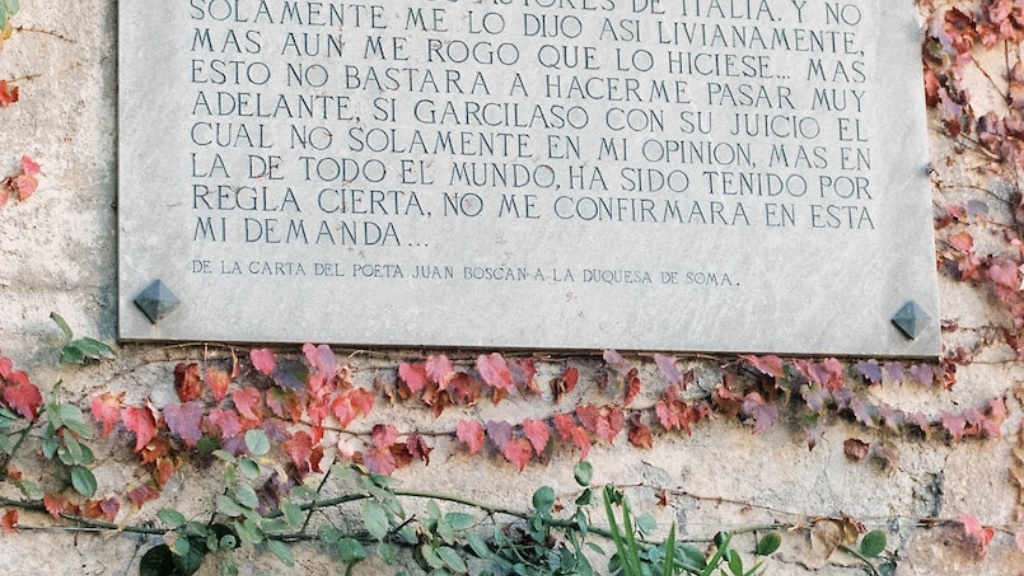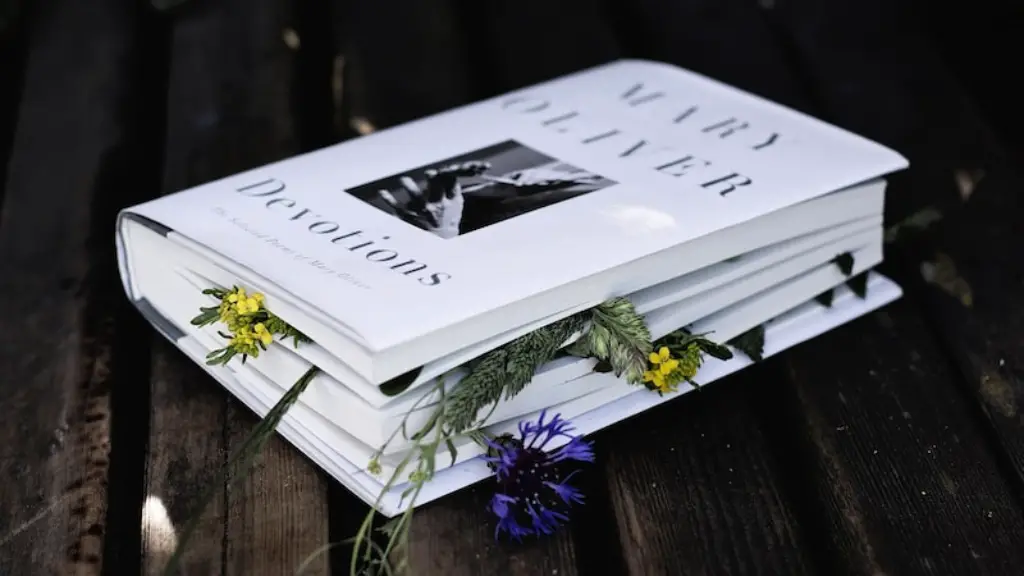Showing a New Line When Quoting Poetry in HTML Format
Poetry is one of the oldest art forms, stretching back centuries. It’s deep, evocative, and often challenging to understand. But to appreciate it, you have to be able to see it properly. To make poetry visible on the web, careful consideration must be given to the structure of the layout, which includes when and how to use a new line when quoting poetry.
In HTML, there are a few ways of showing a new line when quoting poetry. The most common way is by using a
Alternatively, you can use a
element, or paragraph element. This element is a container element, meaning that it requires both a start and an end tag. This paragraph element will contain all of the text within it, and will display each line of text as a separate paragraph. This is helpful because it allows the reader to differentiate between different sections of the poem easier, as well as providing space for the poem to “breathe”.
Finally, you can also use
elements. Theelement stands for “preformatted,” and is a container element. The main difference betweenandis that preformatted elements will display text exactly as it is written, rather than reformatting it to fit the line lengths of a web page. This is helpful for preserving the original formatting of the poem, such as indentations, making the poem easier to read.
These are the three main ways to show a new line when quoting poetry in HTML. The key is to choose the element that best suits the poem you are trying to display. Depending on how much control you need, you can use a mix of all three elements. For example, you may choose to useto contain the overall poem, and
to give it a bit of structure.Adding Text Styling and Effects to Poetry in HTML
Once you’ve chosen an element to use for displaying your poem, you may want to add an extra layer of styling. HTML provides a range of styling options, such as font size, font color, and font weight. You can use these to emphasize certain words or phrases and make the poem more interesting. Additionally, you can add effects like drop shadows, outlines and highlights to make the poem more visually appealing.
If you’re using theelement to preserve poem formatting, you might also consider using theelement. This element lets you wrap specific text within a poem in a style. For example, you could useto make just a few words within the poem bold or to give them a different color. Be aware, though, that this element is designed to be used only for short segments of text. Using it on larger chunks of text would require too much code and drastically increase the load times for your webpage.Including Citation information for Poetry in HTML
When quoting poetry on the web, it’s important to include citation information. This includes the name of the author and the poem, as well as any other relevant information, such as the publisher and year of publication. This helps to ensure that the poem is properly credited to the original author and to prevent plagiarism.
Including citations is easy with HTML. You can use theelement, which stands for “citation”. This element is designed to contain citation information, such as the author’s name and the title of the source. The element can then be styled to give it the proper look and feel. You could also use theelement, which is designed to contain “smaller” text. This element can be used to include additional information, such as the publisher and year of publication.Linking to Other Sources for Poetry in HTML
If you’re quoting a poem, you may also want to include a link to the original source. This helps readers to easily find the original poem and further explore the work of the poet. It also helps to provide attribution and respect for the original author.
Including links is easy in HTML. You can use theelement, which stands for “anchor”. This element lets you link to other resources, either on the same page or on an external page. You can also use this element to link to the original source of the poem, such as a book or an online resource. This way, readers can follow the link to find the original poem.Setting Poems to Music in HTML
Another great way to make poems more accessible on the web is to set them to music. Music can help to evoke an emotion and atmosphere, and make reading poetry more enjoyable. You can also include other elements, such as audio samples or video clips, to accompany the poem and make it more engaging for readers.
Including multimedia elements is fairly straightforward in HTML with the help of frameworks like Bootstrap. Bootstrap is a framework that helps developers quickly create interactive elements, such as audio players and video players. This can be used to set the poem to music or to add other elements, like images or video clips, to accompany the poem.Advertising a Poem on Social Media in HTML
Lastly, you may also want to consider advertising your poem on social media. Social media is a great platform for promoting poetry and engaging with readers. You can use HTML to create links and images that readers can share on their social media accounts. You can also use social media plugins, such as Facebook plug-ins, to help readers easily share the poem and find new readers.
The best way to do this is to create a separate page for the poem, which you can link to from your social media accounts. This page should contain a link to the poem, as well as information on the author and links to purchase the work. You should also consider creating a promotional image or video clip to help draw attention to the poem. Finally, be sure to include social media “share” buttons so readers can easily share the poem on their own accounts.Selling a Poem on Your Website in HTML
If you’d like to make money by selling your poem, HTML can help you do that as well. You can use HTML to create a “buy now” page where readers can purchase the poem. You can also use HTML to create a digital download of the poem so readers can access it as soon as they purchase it.
You can also take payments for your poem with a payment gateway like PayPal. PayPal is a secure and trusted payment processor that allows you to quickly and easily accept payments from customers. You can link PayPal to your website and set up a page where readers can purchase the poem. Additionally, howto payment gateways like Stripe or authorize.net or Apple Pay can also be used to sell your poem.Including Biographical Information in HTML
Including biographical information is a great way to let readers get to know the poet behind the poem. You can use HTML to include a brief biography of the poet, as well as a link to their website or other social media accounts. This will help readers to connect with the poet and to understand more about their motivations and inspirations.
Additionally, you can use HTML to include additional information about the poem. This includes information on the poem’s publication history, its themes, and its sources of inspiration. You can also include a link to other texts that were inspired by the poem or that reference it.Aggregating Poems in HTML
If you’d like to make your poem part of an online collection, HTML can help with that as well. You can use HTML to create a repository of poems, which readers can explore. This will help you to connect with a larger audience and to interact with other poets and readers.
To do this, you’ll need to use database software, such as MySQL, to structure and store the data. You can also use frameworks like AngularJS to create the user interface and to display the poems. Additionally, you can use services like Amazon Web Services or Microsoft Azure to help manage the backend of the site and to ensure the site runs smoothly.Keeping the Poem Secure in HTML
Finally, it’s important to keep the poem secure. HTML provides a variety of security features that can help to keep the poem safe from unauthorized access. For example, you can use authentication methods, such as two-factor authentication and OAuth, to ensure that only authorized users can access the poem.
Additionally, you can use various encryption techniques, such as HTTPS, to ensure that all transferred data is secure. You can also use Content Security Policy and other security headers to help protect against malicious code and malicious bots. Finally, you can use services like CloudFlare to help keep the poem safe from cyber attacks.



